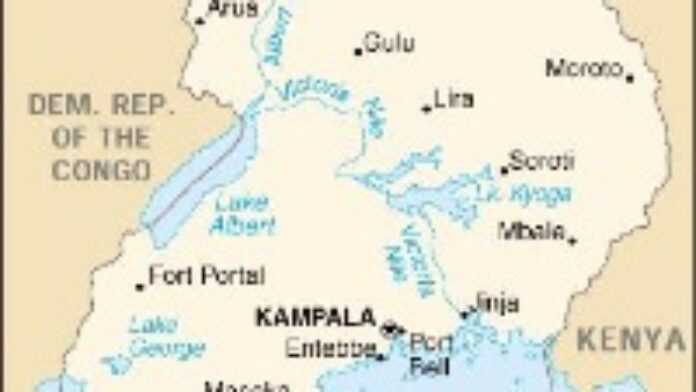
Clashes erupted on 10 September in the Ugandan capital, Kampala, following a planned visit by King Ronald Muwenda Mutebi of the Buganda kingdom to the central district of Kayunga on 12 September. The riots, which lasted for two days caused the death of some 20 people, spread across the city and in several neighbouring districts on 11 September. The local media reported that people had been gunned down by the police who have denied the allegations. Kayunga, which is part of the Buganda kingdom, is believed to be inhabited by mostly non-Baganda. The riots were sparked when the minority community in the largely Buganda populated area opposed the King’s trip. The Kayungas who opposed the visit of the king said they had seceded from the Buganda Kingdom.
Among other reasons that have raised tensions include land rights issues and a call for more constitutional powers for Kings. The Baganda have been advocating for a restoration of a federal administration that would formally recognize the political power of their King. President Yoweri Museveni restored Kingdoms in 1993, after they were abolished in 1967 by President Obote. Restored Kingdoms were established as non-political cultural institutions. The President has insisted that the Buganda Kabaka (King), Ronald Muwenda Mutebi II, is a constitutional monarch and therefore not supposed to take part in partisan politics.
However, Bagandas claim their King’s visit was neither politically motivated nor about challenging the country’s political power. The King’s visit, they say, was organized under a social umbrella. President Museveni thinks otherwise. Buganda Kingdom officials have also said the central government is trying to thwart the King’s visit to his own land. In a bid to clarify these issues, the President claims to have invited the Kabaka on several occasions for dialogue, but to no avail. Speaking in a recent interview, Mr. Museveni said “I have been looking for that King, he is the one who has been avoiding me and instead going for agitation and incitement”. His question is whether these burning issues should be “discussed with these Kings” or “should matters be resolved by the political leadership”. In the final analysis, he believes that “the only way forward” is “dialogue, dialogue, dialogue”. According to observers, the choice of dialogue is inevitable even if it compromises the government’s political stand point, considering the “ceremonial” King’s influence.
Buganda is the largest and most politically powerful kingdom with about 20 per cent of the total Ugandan population and constituting the largest single ethnic group in the country. The Kingdom is strategically located in the central region along the shores of Lake Victoria and houses the nation’s capital, Kampala. The Baganda have an estimated population of about five million people. During the colonial era, Buganda became the most influential kingdom in Uganda when the British rewarded it for its collaboration by giving it territories that belonged to the western kingdom of Bunyoro. Many Baganda have, for several years, unsuccessfully lobbied the government to introduce a federal form of government that would give some autonomy to the regions.
Kingdoms in Uganda
The kingdom of Bunyoro, with about 700,000 people, is in western Uganda along the shores of Lake Albert. It casts itself as the oldest East African kingdom, and is ruled by an Omukama. Historically one of the most militarily powerful kingdoms, Bunyoro opposed colonization and paid for it with the loss of some territory. Much of the oil recently discovered in Uganda is in this region. The current Omukama is Solomon Gafabusa Iguru 1, the 27th king of Bunyoro.
Traditionally, the Acholi people of northern Uganda were organized in groups of clans presided over by a Rwot, or paramount chief. Two decades of war in the north between the government and Lord’s Resistance Army rebels, however, forced about two million Acholi to abandon their homes and seek refuge in camps. Currently, the kingdom is using traditional Acholi justice systems – such as mato oput, where the offender confesses his crime and is absolved – to try to build peace and reconciliation. The current Rwot is David Acana Onen II.
On the eastern shores of Lake Victoria where the source of the River Nile is located, Busoga is one of the country’s oldest kingdoms. Ruled by a Kyabazinga, the kingdom has about two million subjects. A succession struggle followed the death in 2008 of the previous Kyabazinga, Henry Wako Muloki. In June, Prince Edward Columbus Wambuzi installed himself as the new Kyabazinga, but opposition remains.
Also in western Uganda, the Toro kingdom – with about 800,000 subjects – was formerly part of Bunyoro; its leader is also called the Omukama. The kingdom has close ties with Libyan leader Muammar Ghaddafi, who was made defender of the Toro kingdom in 2001. The current Omukama of Toro is Oyo Nyimba Kabamba Iguru Rukidi IV, who became the world’s youngest monarch at the age of three in 1995.
Located in southwestern Uganda and traditionally ruled by an Omugabe, the Banyankore people (also known as the Banyankole) are divided into two groups with a total population of 2.3 million – the minority, mainly pastoralist Bahima, and the mainly agriculturalist Bairu.
Although it is one of Uganda’s oldest kingdoms, Nkore (also known as Ankole) has not had its title returned, so its leader, John Barigye, is officially regarded only as a prince.
Several other kingdoms and chiefdoms are officially recognized by the government, including the union of Alur chiefdoms, the Iteso paramount chieftancy, the paramount chieftaincy of Lango and the Padhola state.

